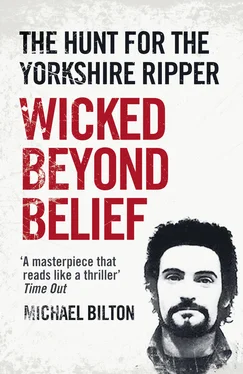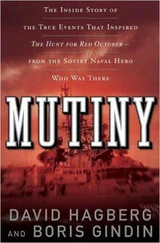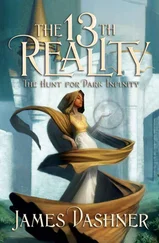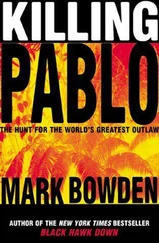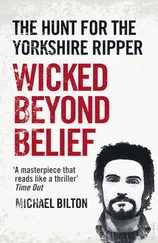He drove to Leeds at high speed down the motorway, to find Oldfield had just beaten him to the murder scene. Oldfield came to greet him, then directed him to a patch of derelict land in front of a children’s adventure playground in Reginald Street, next to a dilapidated factory building scheduled for demolition. It was overlooked by two streets. Three-storey Edwardian terraced houses in Reginald Terrace faced the playground on one side; the rear gardens and outhouses of a row of large semi-detached houses looked across on to the crime scene on the other side of Reginald Street. The playground itself resembled a Wild West stockade, its boundary fencing made of timbered railway sleepers driven several feet into the ground, with sawn lengths of barked timber secured at the top to a height of about seven feet. The equipment in the children’s play area was made from large timbers, including telegraph poles. One half of what had been a pair of hinged timbered gates at the entrance into the stockade remained shut. The other gate was missing.
A mobile police command with a tall radio mast had been positioned in Reginald Street, complete with its own power generator. Roads had been cordoned off and detectives with clipboards were already knocking on doors. Milling around were members of the Leeds murder squad, who had received an early ‘shout’ of possibly another Ripper killing. They did not know Oldfield had decided on a change of tactics. Neither, apparently, did Jim Hobson, who as head of the city’s CID was present and expecting to lead another murder inquiry. He was trying to drive along his Ripper investigation, anxiously following the progress of the tyre inquiry and organizing a small proactive undercover operation in the Chapeltown area using a few women police officers as decoys. His team were starting to gear up for a major investigation when Oldfield announced he was taking charge and bringing in his own team of supervisors.
Oldfield wanted a fresh start, using the West Yorkshire murder investigation system drawn up by his predecessor, Donald Craig. Holland’s most important task would be to indoctrinate the Leeds murder incident room team into using the West Yorkshire system of keeping records. It meant more statements would be taken. The Leeds system relied not on paper but on activity, with paperwork kept to a minimum. Oldfield wanted much more detail, especially in terms of descriptions of people seen around the crime scene at relevant times.
Holland explained the reason: ‘If somebody says, “I was saying goodnight to my girlfriend outside No. 14 Reginald Terrace when I saw a man come past in a navy blue blazer with brass buttons, pale blue shirt and dark blue trousers,” you want to be able to consult the index system in the incident room to find out who fits that description and see who has been identified and make sure this person has been properly eliminated.’ The Leeds system was excellent at dealing with murders committed by local people. Most were quickly solved because detectives were not bogged down by paperwork; they could put manpower to better use. But if the inquiry became protracted, Oldfield believed, a more thorough system of record keeping based on detailed statements was essential, especially if they were going to mount a successful prosecution. And that was the ultimate goal: to get the guilty man into court and put away.
Inside the playground area was a single-storey, white-painted clubhouse covered in graffiti. A scenes-of-crime photographer stood on the felt-covered flat roof taking pictures, looking down at the corpse on the ground behind the wooden fence, and at the general area of waste ground towards Reginald Street already marked out in white tape. The senior detectives had to wait until the photographer completed his work on the roof before going to see the body. Near the corpse lay an old spring mattress, dumped alongside a pile of rubbish, including a rolled-up length of disused carpet. One of the woman’s shoes, which bore an impossibly long high heel, lay beside her foot.
Because a local pub was a regular haunt of prostitutes, the automatic assumption was that the victim was a street walker. Oldfield and Holland strolled over a tarmac path crossing the waste land, which contained a considerable amount of rubbish. Oldfield pointed out a woman’s imitation leather handbag lying beside the path, a few feet from Reginald Street. Adjacent to it was a piece of rough paper which appeared heavily bloodstained.
The sandy soil leading to the playground entrance was bone dry. A clear trail, consisting of a line of spots and splashes of blood, together with furrows in the soil that looked like drag marks, led down the gentle slope from Reginald Street towards the gateway. Inside the playground on the right side, close to the boundary brick wall of the derelict factory and lying parallel with the timber fencing, was the body of the young woman. From the street she was completely hidden. She lay face down with her head six feet from the brick wall. The legs were stretched out straight and the feet were crossed, the left over the right; the left arm was bent up with the hand beneath her head, the right arm stretched out beside the body. There were large quantities of rubbish and refuse, old tin cans, broken bottles and other material around the corpse.
The body was clad in a grey jacket which had been partly pulled upwards to the shoulders exposing bare skin in her lower back. Her blue and white checked skirt was rumpled towards the upper part of her thighs. One of her high-heeled pale yellow ‘clog’ shoes was still in place; her black tights had a hole visible in the left heel. On closer inspection, the detectives could see blood soiling her head and left hand as well as her jacket and skirt. Vertical trickles of blood ran downwards from the back of the chest across the sides of her body.
By now Professor Gee had arrived. He walked across the wooden duck-boarding into the playground to join the group of officers behind the fence. A fingerprint officer and forensic scientist were making a superficial examination of the body. Green bottle flies buzzed around the victim who they could now see was a young woman, probably in her teens. As the photographer took his pictures flies appeared on her jacket and hair. After a while Gee himself lifted the skirt to expose her underwear. A pale blue underskirt had been raised slightly upwards. Her tights were in the normal position and beneath them she wore a black pair of pants and an external sanitary pad. Peter Swann, the fingerprint expert, wanted some of the woman’s clothing sent away for special examination. The jacket had obviously been pulled up towards the victim’s head by the killer. To prevent contamination, plastic bags were placed over her shoes and hands. The body was then gently raised, the belt of her skirt and the zip fastener at the side were loosened so the skirt could be removed. Her jacket, held by one button across the front of her chest, was also undone and removed, revealing a blue and white sun top bunched up in the upper part of the back. Beneath it was a single stab wound.
Indications confirmed she had been dragged along the ground. Debris was caught in the centre of the straps at the back of the sun top. A piece of paper was discovered in the folds of the left side of the skirt in front of the abdomen. When the body was turned over and placed on a plastic sheet they saw blood soiling the young woman’s face. She looked very young and wore no bra. Her sun top was displaced, exposing the nipple of her left breast. In the front of the central upper region of her abdomen was a large wound and embedded in it was part of the broken top of a bottle with a screw top. Gee pointed out two irregular wounds to the scalp. After mortuary officials took the body away, two more pools of blood were found – one where the abdomen had lain, the other close to the head.
Читать дальше
